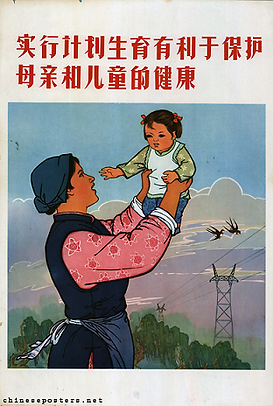
Historical Timeline
International and Chinese Adoption

1961: In the United States, changes to the Immigration and Nationality Act in 1961 made provisions for adoption of foreign-born children by US citizens. Inspired by the large numbers of children born to South Korean and Vietnamese women and fathered by US servicemen in the 1950s and 1960s, several groups helped influence legislation to make it possible for US citizens to adopt these children. International adoptions from other countries followed.
1960s: In China, Mao's Great Leap Forward campaign of the 1950s, which was an attempt to improve industrialization and increase production, resulted in a devasting famine that killed between 20 and 30 million people. As the famine ended Mao Zedong and China’s government encouraged couples to have large families to help increase China’s population.


1970s: By the 1970s China’s population was becoming too large. In 1978 the government put in place a policy to control the growth of the population called the ‘One Child’ policy. It limited most families, especially those in the urban areas, to having only one child. The government believed this had to be done to be able to improve the standard of living and increase productivity. In 1979, China's population was about 972 million people.
1980s - 1990s: In China, the result of the One Child policy was a decline in China’s fertility and birth rates since 1980, with the fertility rate declining and dropping below two children per woman in the mid-1990s. Even with the decline in the birth rate, many poor families still felt very pressured to have a male child if the first was female. A son and his wife supported his parents in their old age, so many poor families felt the need for a son which led to female infants ending up in orphanages.

1992: China began allowing adoption of legally available infants by foreign nationals. This had been allowed by ethnic Chinese in other countries for some years, but in 1992 the adoption policy was extended to all foreign nationals. In that first year 206 babies were adopted by US parents. Starting in 1994 the number of babies adopted from China to the United States and other countries rose significantly every year. The number peaked in 2005 with just under 8,000 babies adopted in the United States from China, and has decreased to a little over 2,000 in 2013. This was partly due to the waiting time for parents to travel to meet their child from a few months in the early 1990s to a current wait time of 5 years or longer.
1992 - 2013: During these years more than 85,000 babies were adopted from China by parents in the United States.
2013 - 2015: The One Child Policy was partially relaxed in 2013 due to growing concern about an aging population and a shrinking labor force. The new rules allowed couples where one parent was an only child to have two children instead of just one. It was further relaxed in 2015 so that more couples could have two children. To the government’s surprise, far fewer eligible urban couples applied for permission to have a second child than expected. In Beijing, one of the first areas where the new regulations went into effect, only 5% of eligible couples applied during the first 10 months that the new rules applied. Late in 2015 Beijing announced that all couples could have two children, ending the ‘One Child’ policy for 35 years.

Who Am I Now? Chinese Adoptees and Cultural Identity
Doryana X. Robins